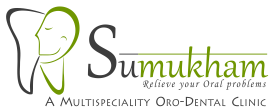Braces
Braces are very common in orthodontic treatments. They are used to straighten the teeth. Braces are mainly used to correct the irregularities of the teeth. After conducting proper exams and check-ups, the dentist will decide on whether you need to have brace treatment. Braces can be removable and fixed. Certain people may require only removable braces. Braces may consist of wires, bands and other appliances. Braces are of different types. The dentist will suggest you the apt one for you according to the requirements of the client.
The main types of dental braces are:
- Stainless steel braces: They are most common types of braces, which are in expensive and traditional. They will have thin wires to hold them in place. Rubber bands may also be used to put pressure on the braces and move them to the right place. They may be irritative and painful during the first stages of treatments.
You may have to be careful while eating certain things when you use braces. You may have to avoid sticky and hard kind of food items. You may also have to use orthodontic tooth brush to clean the tooth properly.
- Ceramic braces: Ceramic braces are more expensive than the stainless steel braces. They blend with the teeth and are not much visible. Ceramic braces can easily break or chip because, they are more sensitive. They require more time to get fitted and also for maintenance.
Ceramic braces blend with the teeth and are not visible as stainless steel braces. They are much better than that of the stainless steel braces.
- Lingual braces: Lingual braces are designed to bond and placed behind the teeth. For the same reason, they remain invisible. Only a skillful and trained dentist can install them. Lingual braces do not work well on small teeth get in the way of tongue. They may cause problems while you speak. So, it is necessary to learn and practice how to use lingual braces without causing injuries.
- Invisible braces: They are most costly than that of any other types of braces. As the name indicates, they are practically invisible. These braces are for people who do not have any great problems with the tooth alignment. Invisible braces are removable rubber trays (custom-fitted aligners). You can remove them while eating and brushing. The process of fitting invisible braces is different from that of the others. In order to move the teeth gradually to the desired place, the dentist will use different aligners every two weeks.
You may feel uncomfortable during the first use. It can give you best results only if you use them in a disciplined manner. You might have to wear them more than 20 hours a day.
Requirements of the patients determine the type of brace to be used. You can choose the brace according to your comfort. In most of the cases, brace treatment may require some teeth to be removed. Some may even require surgeries to change the shape of the jaw and some may require head gears. Anyway, braces are a good method to align you teeth beautifully.
Treatments For Children & Adolescents
Orthodontics is a stream of dentistry which focuses on enhancing the position, appearance and function of abnormally arranged or crooked teeth. The term 'orthodontics' has originated from a Greek word which means "to straighten teeth". Orthodontic treatments are possible at any age. But, best results can be yielded at the young age before the face and jaws get completely grown. Timing of orthodontic treatments can be divided into two phases considering the age group. Early treatment includes:
- Children with 6 months to 3 years
- Children with 5 to 8 years
- Children with 9 to 14 years
- Children with 15 to 18 years
The second phase is called adult treatment. It includes the treatment of adults. According to American Dental Association, you should begin dental check up of your child at the age of two. The 20 primary teeth grow in during the time period of 6 months to 3 years. During this period, the child should learn good oral habits. The orthodontist may evaluate loss of teeth, missing teeth, cross-bite or sucking habits and also suggest using some orthodontic appliances or any complicated treatment during the period of five to six years. The dentist will not recommend any complicated treatment during this age.
The first 8 primary teeth are lost during the age of five to eight. It is called Phase I. The first stage orthodontic treatments are started during this stage. They are done especially to correct spacing, crowding, cross bites, jaw growth discrepancies and overbites. The common appliances used during this period are partial braces and other removable appliances. During this period, the orthodontist will check and work to prevent other problems that can occur in the future.
Finalizing the occlusions is the main goal of Phase II. Children from the age of nine to fourteen will come under Phase II. This is the stage when they lose the other 12 teeth. During this stage, the dentist may recommend brace treatment.
The final stage before beginning the adult treatment is from the age 15 to 18. The wisdom teeth develop during this period. Jaw growth development will be monitored during this period. Wisdom tooth impaction surgeries are also common in this phase.
Main orthodontic treatments for adults may include brace treatment. Adult treatment is not much complex when compared to that of the children. They are grown up people and do not require much attention. They will be able manage their things on their own. Brace treatments are chosen more by adults for aesthetic enhancement.
If cared properly from the childhood itself, you may not have to have much complicated treatments in the future. But still, problems can occur at any age and sometimes, it cannot be detected early.
© 2024 Sumukham
